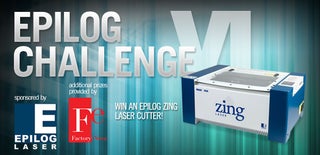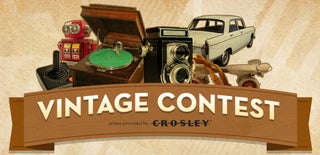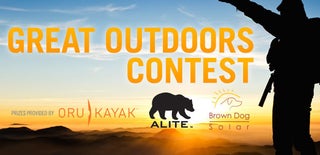Introduction: Wooden Pinhole Camera by Scott Yu-Jan
Hello internet!
Before I start I just want to say this is my first instructables project ever, so I will try to be as thorough as I can in explaining the steps and my process.
So, this is a wide angle long exposure pinhole camera I made during my first year at Emily Carr University. It shoots on 8 x 10 Photographic paper, features a 0.47 mm diameter lens, a tripod mount, and a 280 F-stop (very long exposures). It's the first wood project I have every worked on so it is a fairly easy build.
And remember! If there is anything I left out feel free to ask me in the comments down below. Lets get started!
Step 1: Prototyping Is IMPORTANT!
Even if you are going to be following this instructables post step by step I would still highly recommend prototyping. It will allow you to build much faster and more accurately with less hesitation. You can also do this in CAD software but at the time I didn't know any so I had to improvise with some cardboard and magnets.
Here is the rough idea and measurements. Now that we know what we're building lets head to the woodshop!
Step 2: Frame Pieces
1. Started off by cutting up some half inch plywood for the base, top, and sides.
2. Glued and clamped a smaller half circled shape piece of a quarter inch plywood to the base and top to act as a guide for the film (photographic paper). This is important because I don't have a dark room at home this helped a lot when I fed the film in the dark.
3. Glued and clamped the rest all together.
Step 3: Bent Lamination Backing
1. I took a couple scrap pieces of insulation foam boards and cut up a nice negative of the curved piece
2. After sanding it very smoothly I stacked them and glued them together with some super 77
3. I cut up some birch and oak veneer into the rectangles and got the wood glue ready
4. To get a good successful lamination one must apply a generous amount of glue and and put it all together into the vacuum bag quickly for the glue begins to settle right away.
- I can't quite remember how many layers of veneer I used. It was around 7 - 10 layers.
5. Give it at least 24 hours to dry completely.
Step 4: Lightproof Backing
1. While the bent lamination backing is drying I started making a light proof cover for the back to sit beneath the lamination.
2. I used a black piece of paper in which I covered on both sides with electrical tape to make the backing.
3. Simply stapled it to the back around the curve.
4. For some corners and possible light leak areas I simply used some black silicon to cover them up.
Step 5: Claming on the Lamination
1. Now that the black sheet is making sure the backing is fully lightproof the lamination is ready to be clamped on.
2. Clamp the curve as close to the frame of the camera as close as possible closing up the gap that forms at the curve.
3. Don't clamp it up too hard though or else you'll end up with a crack like I did. It was my first wood project so I knew accidents were bound to happen so I was ready with some solutions. We'll get to that later.
Step 6: Lid, Shutter, and Insides
1. Trimmed off the excess of the lamination
2. To cover up the top and bottom I used some of the veneer left over from the lamination.
3. Built a quick lid that was a bit bigger than the opening of the camera and used some sheet foam from the dollar store on the edges to give it a very snug and lightproof fit.
- In addition I also used some of the black silicone from earlier on the corners and edges
4. On the scroll saw I made a quick sliding piece to use as the shutter.
5. I didn't have any photos of this but I cut out a square piece of aluminum from a coke can and sanded away the paint and finishes. Cut out a piece that fits over the shutter and poked a hole to act as the lens with the thinnest needle I could find.
- The thinner the needle the more crisp and in focus your photos will turn out but it also means your photos will take longer to expose
6. Finally I finished all the insides with an acrylic black paint. Once again I forgot to take photos of this part so you'll just have to use your imagination!
Step 7: Final Touches (the Solution)
1. I chiseled out the a square at the bottom and took the tripod mount off of a broken digital camcorder.
2. I stuck some bolts coming off of the frame and drilled some holes on the lid for them to come through
3. Picked up some drawer knobs from home depot.
THE SOLUTION!!!
Got a few pieces of scrap leather from a near by handmade leather goods shop and covered up the crack!
The left over leather was cut into shapes to decorate the front lid. Leather underneath the knob holes also allowed the knobs to screw on nice and snug not letting any light in.
Step 8: Pinhole Photography
They developed as negatives and then I scanned them into the computer and inverted the colors in Photoshop.
The exposures were quite long but I was very pleased with the amount of detail. I also tried doing a solarography photo. If you do not know what it is google it. It's a very cool technique to take color photos with black and white film without the need of developing it.
Anyways thank you for looking at the process of my project. I hope you guys liked it. If you have any questions leave them in the comments down below.

Runner Up in the
Epilog Challenge VI

Participated in the
Vintage Contest

Participated in the
Great Outdoors Contest









